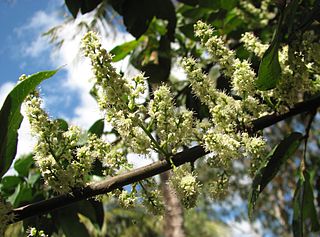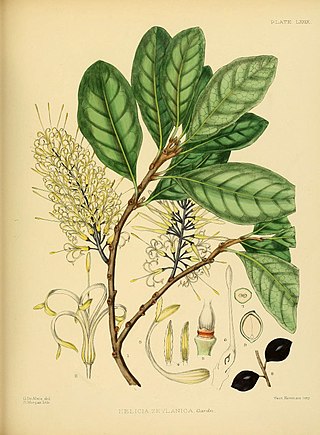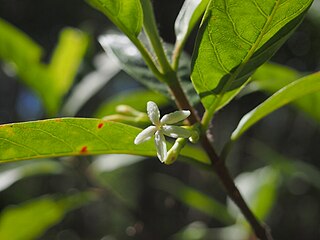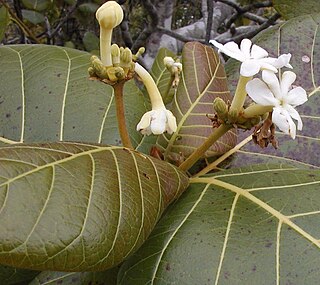
Mackerel is a common name applied to a number of different species of pelagic fish, mostly from the family Scombridae. They are found in both temperate and tropical seas, mostly living along the coast or offshore in the oceanic environment.

The International Union for Conservation of Nature (IUCN) Red List of Threatened Species, also known as the IUCN Red List or Red Data Book, founded in 1964, is the world's most comprehensive inventory of the global conservation status of biological species. It uses a set of precise criteria to evaluate the extinction risk of thousands of species and subspecies. These criteria are relevant to all species and all regions of the world. With its strong scientific base, the IUCN Red List is recognized as the most authoritative guide to the status of biological diversity. A series of Regional Red Lists are produced by countries or organizations, which assess the risk of extinction to species within a political management unit.

The conservation status of a group of organisms indicates whether the group still exists and how likely the group is to become extinct in the near future. Many factors are taken into account when assessing conservation status: not simply the number of individuals remaining, but the overall increase or decrease in the population over time, breeding success rates, and known threats. Various systems of conservation status exist and are in use at international, multi-country, national and local levels as well as for consumer use.

Guioa is a genus of about 78 rainforest tree species known to science, which constitute part of the plant family Sapindaceae. They have a wide distribution, ranging from throughout Malesia, in Burma, Cambodia, Vietnam, Thailand, Malay Peninsula, Borneo, Sumatra, Philippines, Java, Flores, Timor, Sulawesi, Moluccas, New Guinea, further southwards through the east coast of Queensland and New South Wales, Australia and further eastwards to the Pacific Islands, including Tonga, New Caledonia, Fiji and Samoa.

A genet is a member of the genus Genetta, which consists of 17 species of small African carnivorans. The common genet is the only genet present in Europe and occurs in the Iberian Peninsula, Italy and France.

A species that is extinct in the wild (EW) is one that has been categorized by the International Union for Conservation of Nature as known only by living members kept in captivity or as a naturalized population outside its historic range due to massive habitat loss.

Carpoxylon macrospermum is a species of palm tree endemic to Vanuatu, and the only species in the genus Carpoxylon.

Juania australis, the Chonta palm, is a species of flowering plant in the family Arecaceae, the only species in the genus Juania. It is a solitary trunked palm tree which is endemic to the Juan Fernández Islands archipelago in the southeast Pacific Ocean west of Chile.

Loxococcus rupicola is a species of palm tree, and the only species in the genus Loxococcus. It is endemic to Sri Lanka. It is threatened by habitat loss.

Pelagodoxa henryana is a species of palm tree, and the only species in the genus Pelagodoxa. It is found only in the Marquesas Islands of French Polynesia, where it is threatened by habitat loss.
Tectiphiala ferox, or palmiste bouglé, is a species of flowering plant in the family Arecaceae. It is endemic to Mauritius.

Stephen's lorikeet, also known as the Henderson lorikeet or the Henderson Island Lorikeet, is a species of parrot in the family Psittaculidae. It is endemic to Henderson Island in the Pitcairn Islands of the South Pacific.

The Henderson crake or red-eyed crake is a species of flightless bird in the family Rallidae. It is endemic to Henderson Island in the southeast Pacific Ocean. Its natural habitat is subtropical or tropical moist lowland forest.
Peripatoides suteri is a species of velvet worm in the Peripatopsidae family. This species is ovoviviparous, has 16 pairs of legs, and is endemic to New Zealand. These velvet worms range in size from 14 mm to 90 mm.

Helicia is a genus of 110 species of trees and shrubs, constituting part of the plant family Proteaceae. They grow naturally in rainforests throughout tropical South and Southeast Asia, including India, Sri Lanka, Indochina, Peninsular Malaysia to New Guinea and as far south as New South Wales.
Oxanthera brevipes is a species of plant in the family Rutaceae. It is endemic to New Caledonia. It was proposed as a novel species by Benjamin C. Stone based on two specimens, distinguished from other false oranges by a non-articulated petiole. The genus Oxanthera has been synonymized with Citrus, but a name in Citrus does not appear to have been published, and Plants of the World Online regards "Oxanthera brevipes" as an unplaced name.
Terminalia ivorensis is a species of tree in the family Combretaceae, and is known by the common names of Ivory Coast almond, idigbo, black afara, framire and emeri.

Timonius is a genus of plants in the family Rubiaceae. It is the second most specious genus in the family in Papua New Guinea, containing about 80 species known to science, for example :

Guettardeae is a tribe of flowering plants in the family Rubiaceae and contains about 748 species in 14 genera. Its representatives are widespread geographically and are found in the tropics and subtropics.

Endangered species as classified by the International Union for Conservation of Nature (IUCN), are species which have been categorized as very likely to become extinct in their known native ranges in the near future. On the IUCN Red List, endangered is the second-most severe conservation status for wild populations in the IUCN's schema after critically endangered. In 2012, the IUCN Red List featured 3,079 animal and 2,655 plant species as endangered worldwide. The figures for 1998 were 1,102 and 1,197 respectively.














